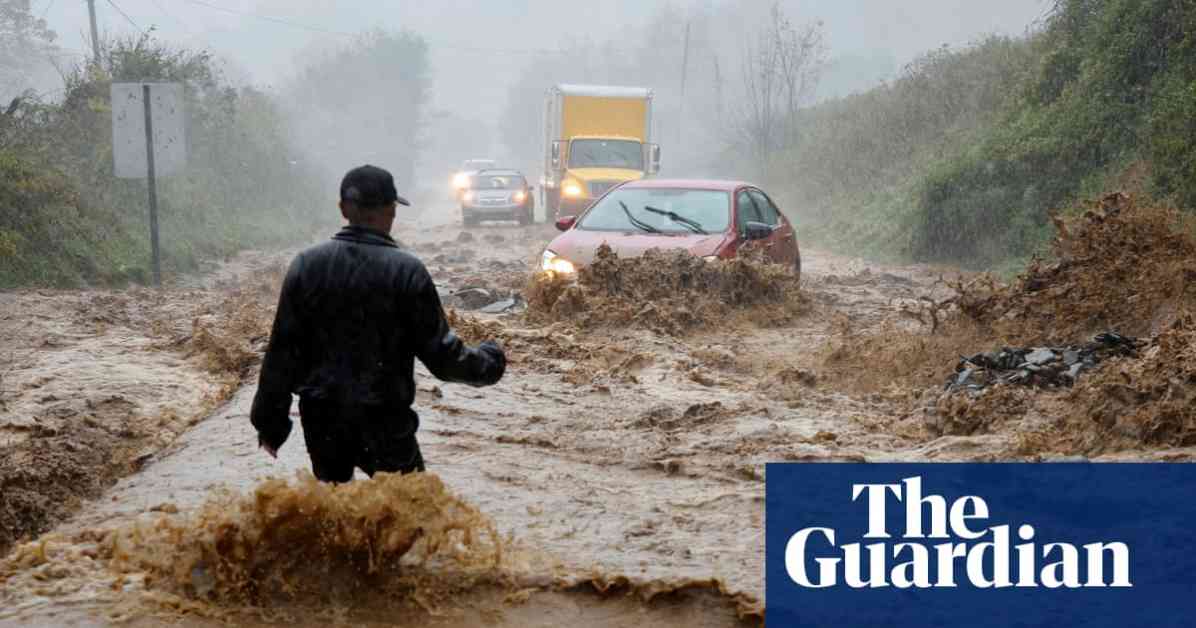Hurricane Helene’s Devastation Across the South-Eastern US
The aftermath of Hurricane Helene in the south-eastern United States has left a trail of destruction, claiming the lives of at least 40 people across four states. The powerful storm made landfall in north-western Florida as a category 4 hurricane, with maximum sustained winds of 140mph. As it moved across Georgia and the Carolinas, it caused dangerous flooding, power outages, and significant damage to homes and infrastructure.
Impact on Communities
The devastating effects of Hurricane Helene were felt most acutely in South Carolina, where at least 17 people lost their lives. Among the victims were two firefighters who were killed when their vehicle was struck by a fallen tree. Georgia also experienced significant loss, with 15 people reported dead due to the storm.
In Florida’s Pinellas county, which includes the Tampa Bay area, five people lost their lives, two of whom drowned. The storm’s strong winds caused trees to fall on residences, resulting in multiple fatalities, including children. Tragically, a four-year-old girl died in a car accident in Claremont, North Carolina, while a seven-year-old boy and a four-year-old girl were killed when a tree fell on their home in Washington county, Georgia.
Tornadoes touched down in various areas, with one in Nash county, North Carolina, critically injuring four people. The storm also unleashed catastrophic flooding, with some regions receiving over a foot of rain. Rescuers worked tirelessly to save people from the rising waters, with some areas becoming accessible only by boat.
Challenges in Recovery Efforts
As the storm weakened, authorities continued to warn of the dangers posed by flooding and damaged infrastructure. The widespread power outages left millions of households and businesses in the dark across Florida, South Carolina, Georgia, and North Carolina. Emergency crews faced challenges in reaching those in need, with some areas cut off by floodwaters and debris.
In Tennessee, more than 50 patients and staff at Unicoi county hospital found themselves stranded on the roof as floodwaters rose around them. Helicopters were eventually able to evacuate them to safety, but the ordeal highlighted the urgent need for swift and effective rescue operations in the wake of a natural disaster.
The threat of dam failures added to the chaos, prompting evacuations in several states. False alarms and miscommunications led to confusion and fear, underscoring the importance of clear and accurate emergency messaging during times of crisis. Despite the challenges, communities came together to support one another and rebuild in the face of unprecedented destruction.
As residents and officials grappled with the scale of the devastation, the true impact of Hurricane Helene began to sink in. The storm’s ferocity and the resulting loss of life served as a stark reminder of the power of nature and the need for preparedness in the face of future disasters.
The psychological toll of such a catastrophic event cannot be underestimated, with many survivors left traumatized by their experiences. The long road to recovery will require not only physical rebuilding but also emotional healing for those who have lost loved ones and seen their communities torn apart.
In the coming days and weeks, the focus will shift to assessing the damage, providing assistance to those in need, and implementing measures to prevent similar tragedies in the future. The resilience of the affected communities will be tested as they work to rebuild and recover from the devastation wrought by Hurricane Helene.












